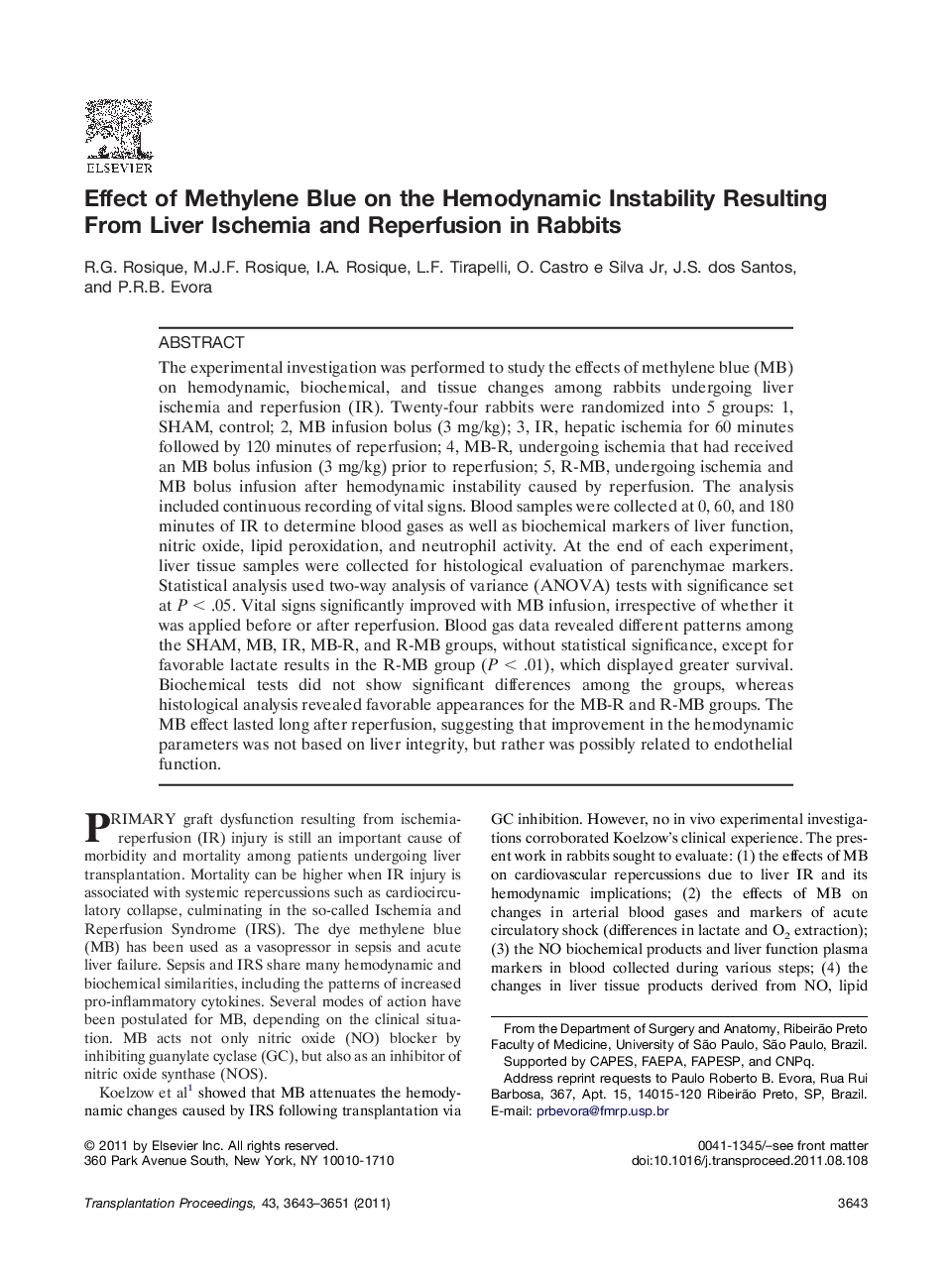| Article ID | Journal | Published Year | Pages | File Type |
|---|---|---|---|---|
| 6248910 | Transplantation Proceedings | 2011 | 9 Pages |
The experimental investigation was performed to study the effects of methylene blue (MB) on hemodynamic, biochemical, and tissue changes among rabbits undergoing liver ischemia and reperfusion (IR). Twenty-four rabbits were randomized into 5 groups: 1, SHAM, control; 2, MB infusion bolus (3 mg/kg); 3, IR, hepatic ischemia for 60 minutes followed by 120 minutes of reperfusion; 4, MB-R, undergoing ischemia that had received an MB bolus infusion (3 mg/kg) prior to reperfusion; 5, R-MB, undergoing ischemia and MB bolus infusion after hemodynamic instability caused by reperfusion. The analysis included continuous recording of vital signs. Blood samples were collected at 0, 60, and 180 minutes of IR to determine blood gases as well as biochemical markers of liver function, nitric oxide, lipid peroxidation, and neutrophil activity. At the end of each experiment, liver tissue samples were collected for histological evaluation of parenchymae markers. Statistical analysis used two-way analysis of variance (ANOVA) tests with significance set at P < .05. Vital signs significantly improved with MB infusion, irrespective of whether it was applied before or after reperfusion. Blood gas data revealed different patterns among the SHAM, MB, IR, MB-R, and R-MB groups, without statistical significance, except for favorable lactate results in the R-MB group (P < .01), which displayed greater survival. Biochemical tests did not show significant differences among the groups, whereas histological analysis revealed favorable appearances for the MB-R and R-MB groups. The MB effect lasted long after reperfusion, suggesting that improvement in the hemodynamic parameters was not based on liver integrity, but rather was possibly related to endothelial function.
